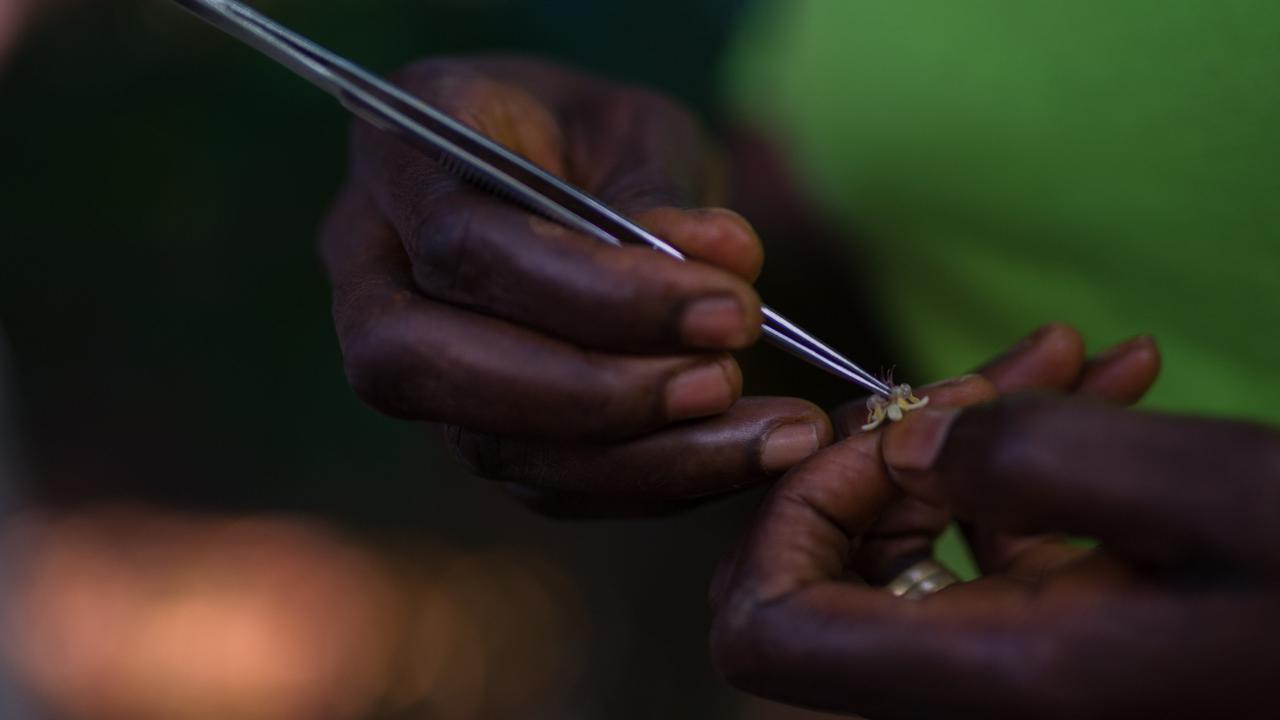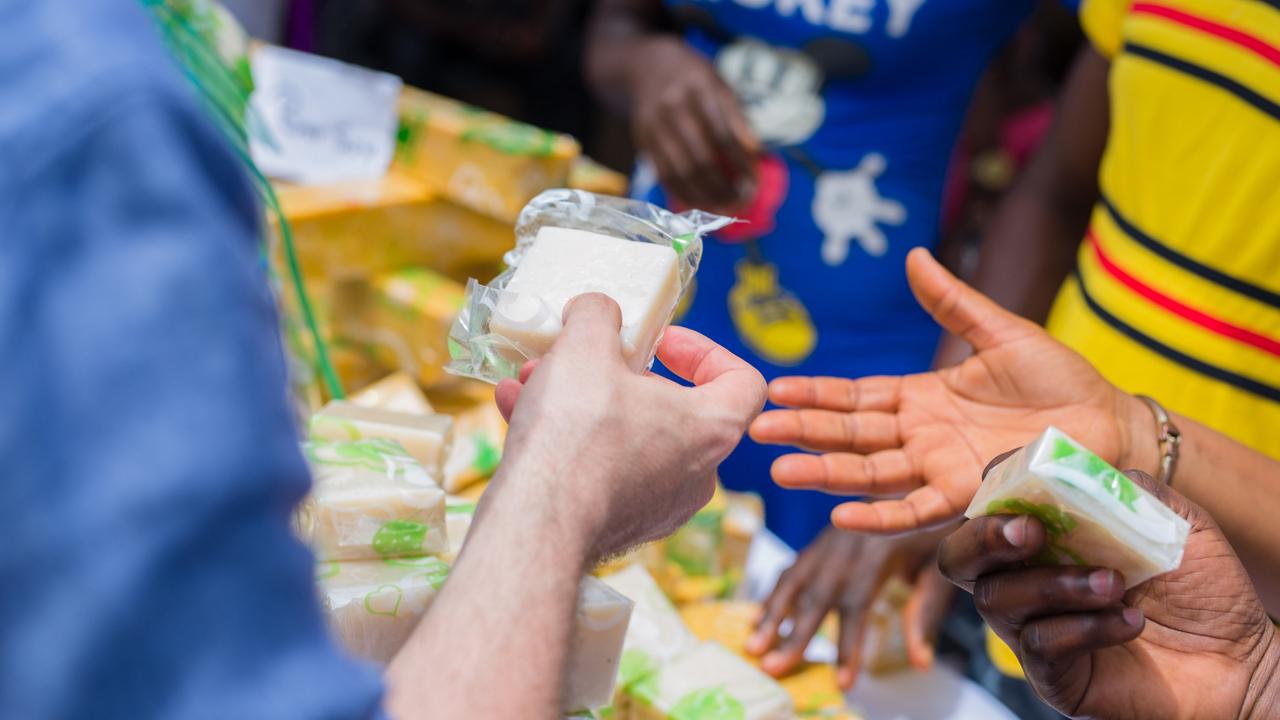Cadbury’s stark warning: Radical action needed to keep the chocolate flowing
Enjoy it while you can, because Cadbury has warned Dairy Milk bars could become a thing of the past if radical action isn’t taken soon.
Right now, a teenager in a village some 16,000 kilometres away from Australia is making a decision that could turn an everyday foodstuff into an unaffordable luxury.
Depending on that teenager’s choice, the humble Dairy Milk bar could go from shopping staple to rare and expensive treat.
*Whisper it quietly*, but it’s even being said that chocolate could become effectively extinct.
Cadbury, one of the world’s largest chocolate makers is understandably worried.
The firm, now part of US food maker Mondelez, is taking radical action to try and keep Ghana’s cocoa trees growing and the Dairy Milk flowing.
Speaking to news.com.au, Yaa Peprah-Amekudzi, one of the company’s execs in Ghana, was frank.
“There are big hurdles to Ghana remaining a large cocoa producing nation.”
But not all the farmers in the West African nation of 29 million where Cadbury sources most of its chocolate, are happy about the company’s plans.

EXODUS TO ACCRA
This young person’s choice is between staying on the cocoa farm they’ve been brought up on or heading to the capital city of Accra to sell, say, mobile phone cases or sneakers.
An average farmer might make around the equivalent of $AU800 a year. Yet a savvy seller of mobile phone cases in a bustling city market could make over $AU1000. And the latter is far less back breaking.
Ms Peprah-Amekudzi, who heads Mondelez’s Cocoa Life sustainability program in Ghana, said the bright lights of the city were a huge draw.
“When young people are exposed to other places where there is electricity and easy access to transport the tendency is for them to resist staying in their communities,” she said.
This exodus has left cocoa farming in fewer, and older, hands. The average age of a Ghanaian cocoa farmer now stands at 55. Life expectancy in the country is 63.5. Cocoa farmers are, quite literally, dying out.
If old age doesn’t leave the cocoa pods to rot, climate change could see them shrivel as the Sahara marches ever southward. Then there’s the lingering odour of child labour.

$3 BILLION COCOA CROP
When news.com.au visited, the sun was beating down on Okwampa. The village is reached up a potholed track, fringed by goats, three hours west of Accra and six degrees north of the equator.
Hot, humid and wet, this is the perfect territory for the short squat trees that produce the plump, almost alien like, cocoa pods.
Hidden deep inside are the beans, worth almost $3 billion annually to the Ghanaian economy, where 20 per cent of the world’s cocoa is sourced.
It’s not easy getting to them. The pods have to be plucked, prised open, the beans extracted, fermented and then dried. A complex process that has defied automation.
Around the cocoa villages, the thick vinegary aroma of fermenting beans hangs like a sticky fog on the lush trees.


Currently, a farmer might fill six bags with beans each year. But global cocoa prices have been heading south, further putting off young farmers:
“If a farmer got 100 cedis (the Ghanaian currency) today and 60 cedis tomorrow they wouldn’t be happy. They wouldn’t appreciate that the reason is the world market,” said Ms Peprah-Amekudzi.
The Ghanaian government has subsidised payments to farmers so they are insulated from the global price rollercoaster. But the nation doesn’t have bottomless pockets.
Mondelez’s $550 million Cocoa Life program, which includes Fairtrade and World Vision as partners, aims to raise the incomes and living standards of farmers, reduce child labour, and combat climate change. All Dairy Milk bars in Australia now contain cocoa from farms on the program.
Cadbury’s parent admits there’s a long way to go. It works with 37,000 of Ghana’s 2.3 million cocoa farmers. While this represents less than 2 per cent of farmers, the firm said it had an “ultimate goal” to source all cocoa sustainability.

The program has encouraged cocoa farmers to work smarter, to have bigger plots, identify crop diseases earlier, sow stronger variants, even to simply plant cocoa trees in straight lines so they can pluck the pods quicker.
Mondelez has also assisted farmers to diversify their incomes by growing and selling coconuts and cassava or making soaps.
“If you introduce interventions, production can double. But it could be 10 times that,” said Ms Peprah-Amekudzi.
She tells the story of one woman who went from three bags to 75, raking in $AU14,000 a season — that’s more than you’d get selling mobile cases.
“She paid attention to training; she weeds and prunes on time, she applies fertiliser. She told me that originally she was just a trader — now she is a businesswoman.”


‘WE HAVE DISAGREED’
Not every farmer is so positive. When selling through Fairtrade, they were paid a premium, above the market price, for their beans. But George Adusei, who runs a farmers co-op, told news.com.au farmers on the new Cocoa Life program had seen that premium whittled away.
“Oh yes, we have disagreed with Mondelez. When they moved away from Fairtrade they reduced the premium from $US200 a bag to $US30 and now $US80. We have come to a new agreement but many farmers were not happy.”
A Mondelez spokesman said farmers could choose to sell their beans through Fairtrade or Cocoa Life and none should be receiving any less they were previously. The Cocoa Life premium, combined with better farming techniques, has the potential to greatly hike farmers’ total incomes, he said.
But won’t growing more cocoa depress the global price even further? The company said Cocoa Life beans made up a small proportion of global production and farmers on the program earned a third to half more than other farmers.
A single map (below) sums up the severity of the issue. With climate change, it shows how suitable the land will be to grow cocoa in 2050. The vast splashes of orange and red show land that will be far more challenging, if not impossible, to grow the crop on with current farming methods.

SPREADING SAHARA
Climate change is another huge challenge. The Sahara to the north is encroaching on Ghana. America’s National Oceanic and Atmospheric Administration has warned rising temperatures could decimate this narrow equatorial strip by 2050, effectively rendering cocoa extinct, only able to be grown on higher, cooler ground and no longer a mass produced product.
Farmers are being encouraged to plant “shade” trees to shelter the fragile cocoa plants, grow stronger variants and introduce irrigation.
And then there’s child labour. The 2018 Cocoa Barometer found 2.1 million children in Ghana and neighbouring Côte d’Ivoire were working on farms. “Not a single company or government is anywhere near reaching the sector-wide objective of the elimination of child labour,” was the scathing assessment.


The firm says its an issue that only companies, government and communities working together can solve. Mondelez has insisted it’s playing its part with tens of thousands of farmers educated about child labour and committees set up in villages to ensure kids are at school and not on the land.
More schools, more awareness and rising incomes will reduce child labour, it said.
“We need to take a look at what we mean by child labour. A child helping out in school holidays may be learning the trade of their parents,” said Ms Peprah-Amekudzi.
“But that child shouldn’t be put in hazardous situations. That child should not be wielding a machete.”
Ghana has an aim is to eradicate the “worst forms” of child labour, such as cutting pods from trees. News.com.au did not see any kids working on farms, indeed many were in school uniforms.
But, occasionally, on the side of a road, a young teenager was spied with a machete. There was no suggestion they came from Mondelez farms and none were seen using the knife.

‘WE WOULD LIKE THE MONEY’
In the village of Atta ne Atta, community leader Oheno Baofo showed news.com.au his farm.
He was confident that smarter farming and bigger profits would make his young family think twice before leaving the land to sell sneakers.
“We want Cocoa Life to work because we want you to have lots of chocolate and we would like to have the money.”
Is he rich? Beneath the equatorial sun, in the dappled shade of one of his bulging cocoa trees, Mr Baofo chuckled.
“I am a partially rich man”.
— The reporter travelled to Ghana with the assistance of Cadbury Australia, part of Mondelez.




